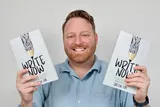Are You Writing For An Audience Or Authenticity?
What Emily Dickinson’s fictitious life teaches about fame

I didn’t know much about Emily Dickinson until recently. I’m sure we studied her poems in high school, but poetry was never my strong suit. As such, knowledge of the American poet escaped the folds of my brain.
I recently watched the AppleTV+ series, Dickinson, based(ish) on her life. The show, starring Hailee Steinfeld as Emily Dickinson, is full of intentional anachronisms and 1850s young-adult angst. While Dickinson is historical fiction, it provides a compelling introduction to the poet.
Emily Dickinson wrote over 1,800 poems on scraps of paper hidden until after her death. While a few of her poems were published in the newspaper, Emily’s true genius went unnoticed. Emily left most of her poems unread during her lifetime.
Unlike Emily, we writers have access to a wide array of tools and publishing platforms. We can convey thoughts, edit them, and send them to the world from the comfort of our living rooms. Then, in something 1850s-era writers would not comprehend, we’re able to receive instantaneous feedback.
An episode of Dickinson explores what it may have been like had Emily seen immediate reactions to her poem in print. During the episode, Emily is invisible and able to stroll through town as people read the paper.
Today, we open our stats and see what lands and what falls flat. We read the comments to learn what people really think, whether we want to hear it or not. Many platforms even tie favorable statistics to monetization.
Based on all this information, it’s easy to adapt our future words and ideas based upon audience reaction and what might net the highest profit. We can shelve ideas and topics that may not receive as much accolade for more lucrative ones. But, should we?

In the second season, Emily is experiencing writer’s block. She meets Frederick Law Olmsted, who designed Central Park in New York City. The two are lost in a park and talking about creativity.
Emily, frustrated, says, “Maybe I shouldn’t try to have an audience at all. Maybe fame is dangerous. I mean, I gave one poem to one man, and now I have writer’s block.”
Frederick responds, “The audience is irrelevant. The work itself is the gift, not the praise for it. Understand that, and you’ll understand true mastery.”
Emily Dickinson spent her entire life writing for an irrelevant audience. Scholars debate the reasons for her obscurity. However, they are certain Emily did not create a following in her lifetime. She wrote hundreds of poems never shared or read by anyone until after her death.
I wonder what words would spew from my brain if I had no concept of an audience or their potential reaction. Would the work be profitable? Lost in obscurity? Unfortunately, it’s impossible to determine.
Since my livelihood is connected to my writing, every concept I spend time on carries weight. Instead of being irrelevant, the audience determines if I can pay bills this month. It’s a very different world than the one Emily Dickinson lived in.

Emily’s invisible walk through town is framed while reciting her poem, Fame is a fickle food (1659). Since no Dickinson poem is titled, scholars added a chronological count to the first line to identify each one. Numbered 1659, Fame is a fickle foodwas written toward the end of Emily’s life.
I imagine Emily Dickinson, a recluse writer living in obscurity, pondering the fame that may have been. Alone in her room, she determines fame is fickle.
Fame is a fickle food
Upon a shifting plate
Whose table once a
Guest but not
The second time is set.
Whose crumbs the crows inspect
And with ironic caw
Flap past it to the
Farmer’s Corn —
Men eat of it and die.
In her own way, Emily Dickinson tells us the audience is irrelevant. While there is no evidence, Emily Dickinson and Frederick Law Olmsted ever met, their conversation about the audience provides a worthy contention point.
As writers, do we seek the fickle food of fame or the freedom of authenticity?
Unless we never publish or submit anything, the answer is somewhere in between.
While I’d love to take the lofty path and say I will only write authentically moving forward, I know that’s dishonest. As I’m writing this, I’m contemplating where to release it, who might see it, and what the financial return may be.
The solution is not viewing the audience and authenticity as two separate things. The two live on a continuum. It’s our job as writers to bring them as close together as possible, building an audience that accepts our authentic creativity.
It’s easy to get caught up in the growth-hack, skim-friendly writing popular on the internet today. If that is your authentic voice, more power to you. If it’s not, take Emily Dickinson’s advice and don’t chase the fickle food of fame. Instead, build your authentic audience and write for them.



